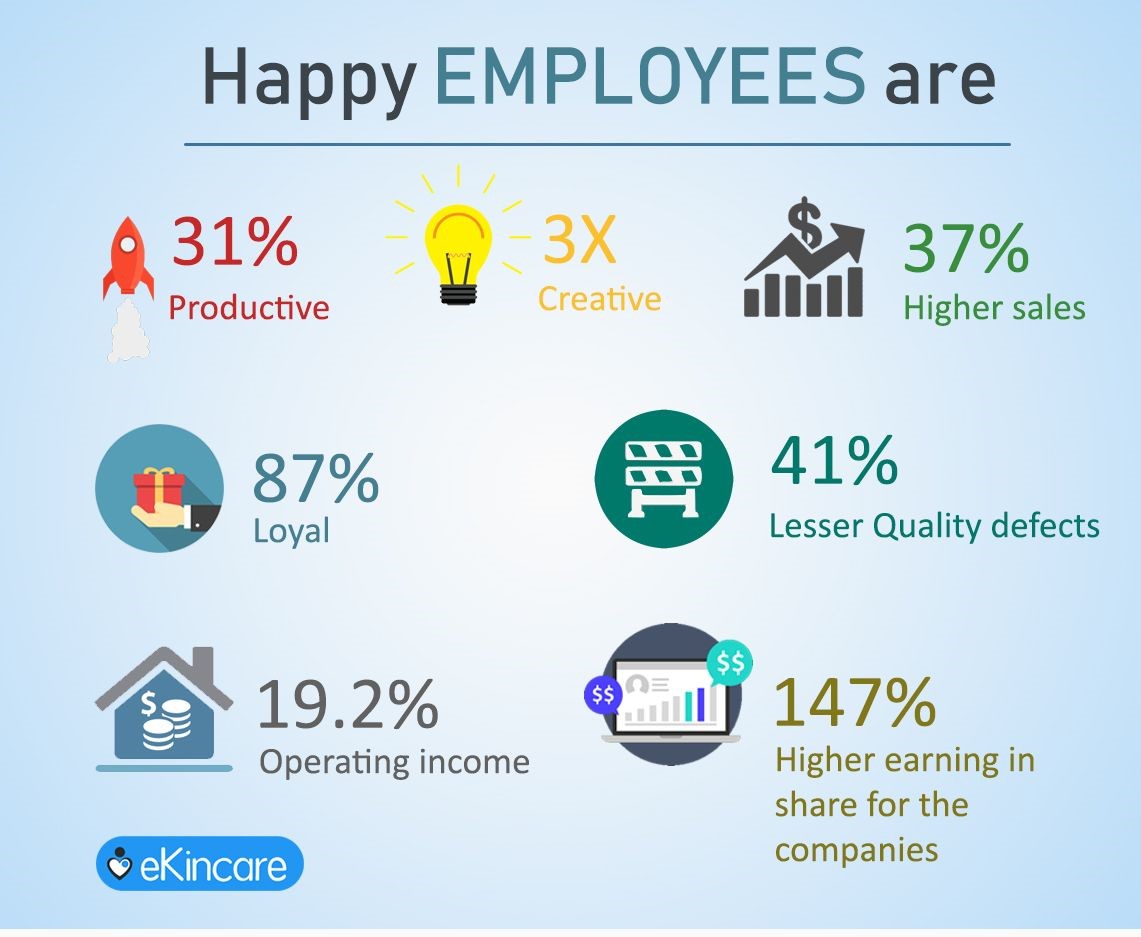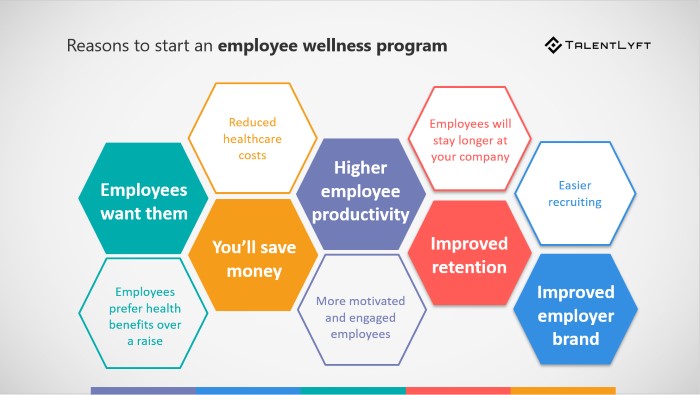Employees are one of the most vital & valuable resources in any business organization. Human resources are the beating heart of any business, the company’s lifeblood that keeps it alive and kicking. Every dedicated employee is a central cog in the success machinery of an organization. Naturally, the health and well-being of employees are the most precious assets of a business.
Investing in HR management and holistic employee well-being development is a concerted effort between the employers & the workforce. Before commencing or re-evaluating any employee wellness program, company executives and the powers need to realize WHY human capital is the most critical asset an organization has.
Human Capital: The Most Invaluable Resource
A company’s employees are the most valuable asset it can possess. While a handful of organizations understand this, the majority are outright ignorant of this essential fact. Poor employee management, a non-conducive work environment and improper conduct have become common incidences across workplaces in almost every sector.
Employee well-being and Human resources management are essential subjects of study in business development courses. Aspiring executives need to dwell deep in these aspects of their business development assignment help them devise better employee management strategies.
An article on LinkedIn cites points out an appalling self-reinforcing loop follow by business systems all over: Increasing shareholder value at any cost with complete disregard of the human factor. The article then makes a solid case for the vitality of human capital.
- The most significant investment any company make is in its people. Employees are the backbone of any organization, and demotivated & disengaged employees cost about $450-$550 billion in lost productivity every year.
Developing staff improvement programs and offering employee well-being opportunities can improve financial performance & shareholder value.
- Employees are the biggest brand ambassadors out there. Proper employee well-being boosts the probability of nurturing creativity & innovation in the workplace. A happy and satisfied workforce indicates a harmonious work environment and can bring out the best in everyone.
Front-line employees know how to improve customer service and create better value. Looking into their satisfaction & well-being can help companies enhance systems and boost efficiency.
- A high employee turnover is indicative of an unstable workplace. Disgruntled employee brings down company performance & efficiency and is the stuff of nightmares for any business.
Laying off demotivated & under-performing employees may seem easy, but nothing can replace their skills & experience. Furthermore, dissatisfied ex-employees can be the worst kind of brand ambassadors possible.
Developing and deploying employee mental & physical health & well-being initiatives is an excellent way to boost motivation, cultivate better values and create a positive & productive work culture.

Why Should Businesses Make Employee Well-Being A Priority?
Employers offer an array of work benefits to their employees. Provident funds, healthcare benefits, retirement or pension plans, paid time-offs and maternity leaves. Every one of these benefits goes on to benefit the business in the long run. From a strictly business perspective, numerous overwhelming reasons exist for implementing worker well-being programs.
Let us look at some more business-specific advantages or “hard returns” of employee welfare initiatives.
- Physical and mental well-being- that’s the ulterior motive, that’s what we are all after. Employee well-being programs have the probability of improving employee health & work behaviors, which directly impact the business aspects of a company.
Take, for example, Johnson & Johnson. Incidences and performance issues due to health problems such as blood pressure, diabetes, etc., have dropped significantly since the company began to implement employee wellness policies at every level. Company leaders observed a superior performance & motivation boost and estimate that the wellness programs have saved the company $250 million on health care costs over the past decade.
The ROI on the wellness programs was $2.71 on every dollar spent.
- Employee health and well-being programs allow companies to save up a lot of health costs. An article on Wellsteps.com puts the spotlight on this particular & obvious business benefit in essential details.
Wellsteps.com cites more than 100 different studies which looked into the financial impact of well-being programs. The firm also notes one of the most comprehensive studies in 2001 that reviewed 100 other research papers on employee wellness policies & practices. The financial implications of a wellness program depend primarily on the effectiveness of the policies themselves. Comprehensive well-being programs that demand greater participation have a higher propensity to bring about tangible changes and a profound impact on business costs. The study looked into 22 different policies and healthcare benefits and observed an average return on investment of around $ 3.27 due to reduced healthcare costs.
WellSteps.com puts forth the results of hundreds of peer-reviewed scientific papers as solid evidence regarding the tangible benefits of employee wellness policies.
- A positive impact on company productivity is inevitable with the successful implementation of employee wellness & healthcare programs. Poor health is a significant factor that affects individual & collective performance and overall productivity.
An article on Harvard Business Review claims that companies across the US are saving up on increasing healthcare costs of an aging workforce through careful implementation of effective wellness programs. Healthy employees cost companies less, irrespective of any government incentives. The study demonstrates a random sample of 185 workers receiving a cardiac rehabilitation & exercise training program.
57% of those participants to low-risk status by the end of the six-month program. Medical claim costs reduced by $1421 per participant for every dollar invested in the intervention, a return of $6 in healthcare savings.
- A decrease in absenteeism and better employee retention & recruitment is much more likely when employers enforce strict & holistic employee wellness programs.
- Employees with good health behaviors have lower absenteeism. Destressed and motivated workers contribute to a positive work environment, require fewer health benefits, allowing companies to enjoy better ROI on well-being programs.
- Well-being programs and the resultant positive work environment will have a significant impact on recruitment & retain employees.
For example, Microsoft offers an array of fantastic benefits. Free medical benefits, free gym memberships, varied health clinics and zero insurance premium – a host of handy benefits allow the tech giant to hire and retain the best workforce possible.
A Virgin HealthMiles/Workforce survey finds that 87% of job seekers consider an excellent employee wellness policy a critical influencing factor.
- A well-being program is a significant perk that tips the scale in favor of the company. Comprehensive wellness policies have a substantial impact on employee retention & loyalty and are a driving factor behind developing a highly motivated workforce, a positive work environment, increased performance & morale.
Lower employee turnover rates and a thriving, hard-working & productive workforce becomes a reality with standard wellness policies.
All in all, it can be said proper & comprehensive employee well-being programs have significant benefits from more than one perspective. Reduced medical costs, increased productivity, better morale, and a positive work environment are the most viable business benefits of proper employee well-being measures.

A dedicated employee health and wellness policy can reap several tangible benefits from a business perspective. Employee welfare programs are no longer the exception but are the norm and a key driver of sustainable growth, better brand development and improved employee job satisfaction.
And that wraps up this article. Hope it was enlightening enough for those interested readers out there.
Take care!






